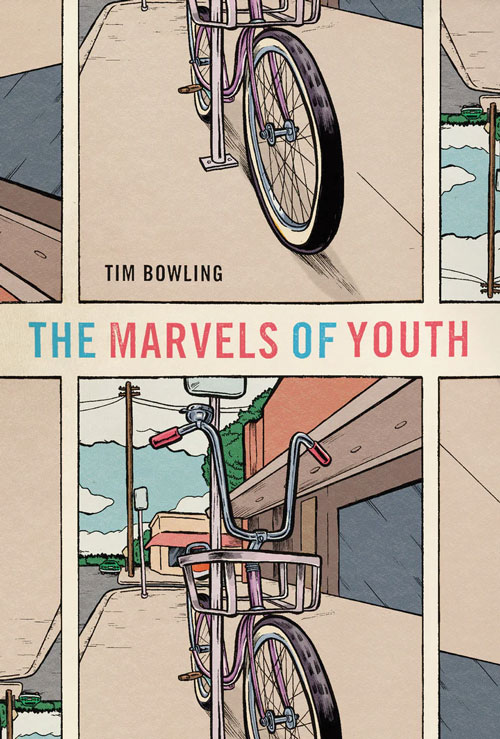Tim Bowling’s new novel, The Marvels of Youth, has a compelling narrative frame: a man in the latter half of his life learns the proprietor of his cherished childhood books and comics shop, The Haunted Bookshop, recently died, and this death prompts an excavation of his memory. We are carried back to Sean Simpson at 10 years old, who exists, as a child does, in physical and fantastical worlds simultaneously.
Sean is the son and apprentice of a salmon fisherman in a dying town at the mouth of the Fraser River in 1975. He is also absorbed in comic books, particularly the imagination of Jack Kirby and his Kamandi, The Last Boy on Earth. Inadvertently, Sean witnesses an affair, a secret which roils in his stomach as he calibrates his moral compass. A neighbouring family suffers from illness. His family’s way of life is challenged by exploitative commercial canneries. Marital dysfunction, abuse, slaughter, even as a means to income—all this at 10. Sean begins to comprehend the implicit and explicit violence enacted in the world and, of course, his own complicity in that violent world, whether by action or inaction.
Bowling writes through the moment a child’s innocence might begin to erode—the current of life pulling at the “fragile barque of imagination” and threatening to carry it out to sea. Sean’s mind is imbued with fear and trembling. The dangers are both real with inflections of the fantastic and imaginary with inflections of the real: “[t]he shift from one world to another, from life to art and back again, the shift from the salmon at sea to the salmon dead under a motionless drum, the shift that haunts me still.” The novel layers worlds upon worlds—through a child’s eye, through a poet’s eye—with language rich as the heavy salmon musk that permeates the town. Bowling is a dependable guide through these worlds, weaving nets of lyricism, mythology and superhero grandeur into the narrative.
Not unlike Captain Ahab in Moby Dick, Edgar Winterbourne is one of the novel’s unforgettable characters. Betrayed by an abusive father, he operates on the fringes of society, not within, not without. The great prehistoric sturgeon who is Edgar’s white whale is a masterful motif that resounds through the novel, symbolic of deep time, preternatural otherness, yet still of this world, strange, incomprehensible, but of us.
Ultimately The Marvels of Youth is about loss: the loss of childhood innocence, of havens, of loved ones, the loss of a mode of being. Throughout his large and varied body of work, Bowling has consistently established himself as an enduring poet of loss. In fact, The Marvels of Youth leaves us with the sense that loss, and only loss, endures.
Colby Clair Stolson is a bibliophile who grew up in Ponoka.
_______________________________________


